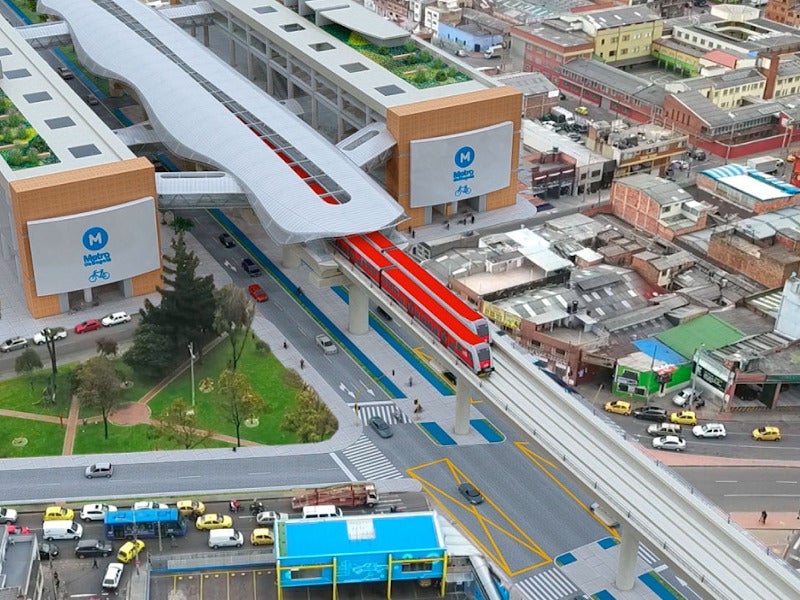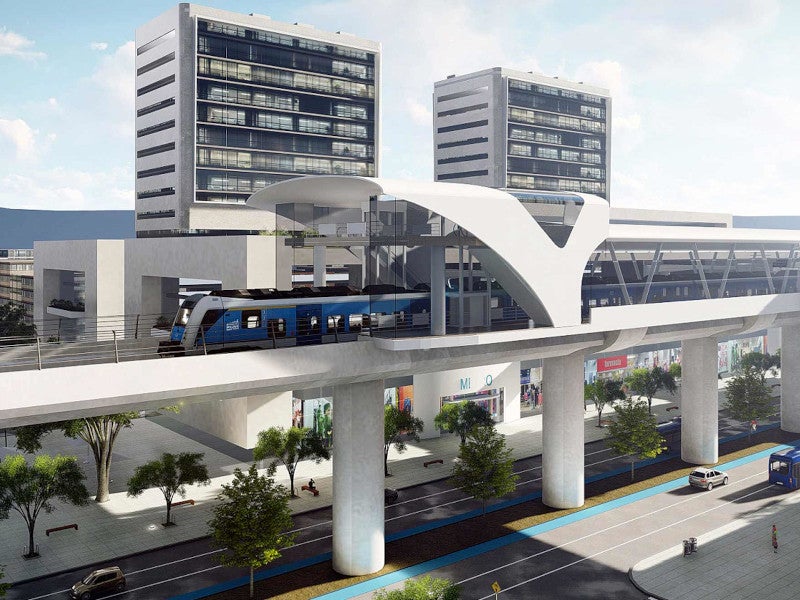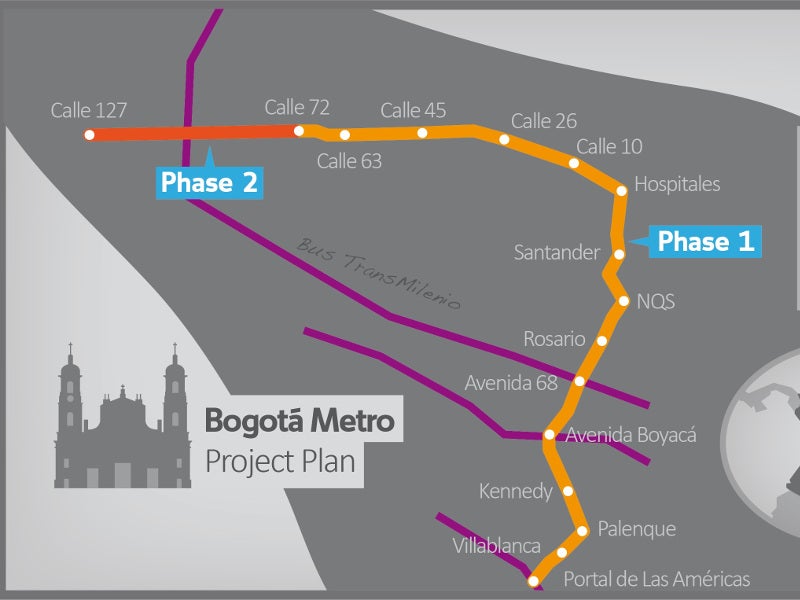Bogota Metro Line one, Section one (PLMB) is a 23.96km-long elevated mass rapid transit (MRT) line to be built in Bogota, Columbia.
Empresa Metro de Bogota (Bogota Metro Company) (EMB), a state-owned company, is responsible for the implementation of the project.
APCA Transmimetro Consortium won the contract to build the Bogota Metro line 1 project through an international bidding process, in October 2019. The $5.01bn project will be developed under the design‐finance‐build‐operate‐maintain‐transfer (DFBOMT) model. The franchise period for the project is 28 years.
The consortium comprises China Harbour Engineering Company (CHEC), Xi’an Metro Company, and Bombardier.
Upon completion, the Bogota Metro line 1 project will be the main transit line for the public and a major passenger transportation system in the city.
The project will contribute to the social and economic development of the city and generate job opportunities. It forms part of a wider plan to enhance Bogota’s mass transit network to enable the availability of mass transit network within a distance of 1km from the homes of the inhabitants by 2050.
The metro rail project is in the pre-construction phase and construction is expected to begin in the second quarter of 2020. The commissioning of Line 1 is expected to take place during the fourth quarter of 2025.
Bogota Metro Line 1 project details and benefits
The preliminary design phase of the Bogota metro line was completed in 2016. The pre‐construction phase involves land acquisition, transfer of utility networks, construction of railyard, and other preliminary works. The construction phase will cover the installation of the viaduct, systems, rolling stock, rails, telecommunications, electrical, control, and 22km of bike lanes.
Works to be carried out under the project will include the intervention of certain sections of TransMilenio bus rapid transit (BRT) system, improvements to 600,000m² of public spaces for pedestrian use, civil works, and construction of new BRT stations.
PLMB will also include two more sections, with the second section planned to be completed by 2030 and the final phase by 2050.
The Bogota Metro line one will be developed to improve access to employment and provide quality transit for users of public transportation in the city. It will serve as the backbone of a larger metro network and improve connectivity between the city centre and the northern and southern districts of Bogota. The metro rail system will reduce traffic congestion and help increase the productivity of the capital city and country.
PLMB is expected to encourage users of cars and motorcycles to shift to a cleaner mass transit mode and reduce greenhouse gas emissions. It will be powered by electricity, allowing the reduction of pollution.
Based on estimates, the metro will reduce 938,000 tonnes of GHG emissions by 2049. The line is projected to benefit 2.92 million people in the region.
The integration of the line with the public transport network will decrease travel time and increase demand for public transport.
Lines and routes
Bogota Metro Line 1 will accommodate 72,000 passengers per hour in each direction. It will connect Bosa depot and 72nd Street.
The MRT system will have an initial capacity of 656,000 passengers per day, with the figure estimated to increase to 1.55 million a day in 2050. It will pass through nine districts including Bosa, Teusaquillo, Kennedy, Puente Aranda, Mártires, Antonio Nariño, Santa Fe, Barrios Unidos, and Chapinero.
The Line 1 will extend from Portal de las Américas to Avenida Caracas while connecting Avenida Villavicencio, Primero de Mayo Avenue, Calle 8 Sur and Calle 1. It will then turn north on the Caracas Avenue to 78th street.
The 25km-long elevated metro line will be constructed on a U-shaped viaduct, which will be built with a height of 13.5m.
PLMB will include 16 stations, of which ten will be integrated with the BRT stations of the TransMilenio network. The average distance between each station is expected to be 1.39km.
Rolling Stock
The metro system will be served by 140m-long, 2.9m-wide trains which will include six to seven carriages with the capacity to carry 1,800 passengers.
The trains will achieve an average speed of 43km/h and reach the south from the north in approximately 27 minutes.
The workshop yard will be built on an area of 32ha adjacent to the Corzo site in the southwest of the capital. It will serve as the parking base for the first 30 trains in the fleet and support the maintenance and repair needs. It will have the capacity to accommodate up to 60 trains.
Project financing
The Bogota Metro Line 1 section one is co-funded by the capital city and the national government. The financing support for the project is supported by multilateral banks and institutions.
As per a financing agreement, the District of Bogota will provide $2.4bn over a 25 year-period, while the Colombian Government will contribute approximately $5bn.
Bogota is supporting the initial phase of the project with an initial contribution of $700m. EMB requested the World Bank to provide a total of $600m for the construction of Bogota’s first metro line.
The International Bank for Reconstruction and Development, which is administered by the World Bank, agreed to finance $70m of the total amount for audits, technical studies and initial construction works of the viaduct. It will provide the remaining $530m to fund the main construction works between 2022 and 2025.
In August 2018, the European Investment Bank (EIB) and the Inter-American Development Bank (IDB) agreed to provide $480m and $600m, respectively.
Contractors involved in Bogota metro rail project
Systra conducted the preliminary studies of the metro line. The company won a contract to provide project management of the design phase and construct the viaduct.
CRRC Changchun Railway Vehicles was awarded a contract to supply 210 GoA4 driverless subway vehicles. The contract scope also includes maintenance of the vehicles for a period of 20 years.









